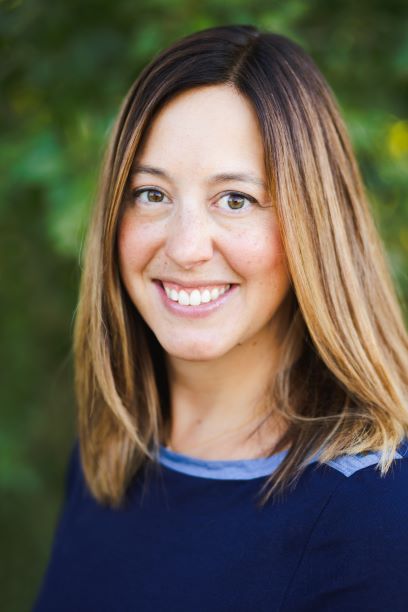Harnessing Group Dynamics in Clinical Consultation
By Shannon Heers
If you have ever participated in group clinical consultation as a therapist, you know that every group is different. Each consultation group will have its own dynamics and culture. These differences are what make the learning process so unique while you are engaging in group clinical consultation.
Group consultation for therapists is any group of colleagues that come together to discuss clinical-related issues. The group can be entirely peer-run or can be facilitated by a clinical supervisor. There is no right or wrong way to engage in group clinical consultation, and the benefits of doing so are manyfold.
As an Approved Clinical Supervisor, I have run many clinical consultation groups. I actually love group therapy by itself, and there are so many ways that consultation groups can mimic therapy groups. This blog will discuss group dynamics in consultation groups, and discuss how this impacts your clinical learning.

Understanding Group Dynamics
In general, group dynamics is the patterns of interaction, communication, and relationships within a group of people. As a therapist, you know this! And you have participated in group dynamics many times throughout your career, as a person, a therapist, and perhaps as a client. Because of this, you know that groups develop and change over time, based on the group members and the group facilitator.
Also included in group dynamics are the different roles and positions that each group member takes on, the communication styles of those in the group, as well as the norms that are developed. Power dynamics and the group’s emotional atmosphere are more difficult to define and see clearly but are nevertheless still present in group dynamics.
Understanding how a group behaves and how the individual members of the group influence each other has an impact on the group’s overall functioning, and performance. Group cohesion, which therapists are familiar with, is impacted by all of the above factors. The effectiveness of a group helps to determine whether or not the group will meet its goals.
How Group Dynamics Impact Professional Development

It is important to be aware of the group dynamics while you are participating in a clinical consultation group. Of course, you want the atmosphere to be supportive and you want your group to be productive, so you can learn and grow professionally.
For example, if you are coming to your clinical consultation group for case consultation on some of your more difficult cases, you want to know that you can safely present your case and be open about where you’re stuck. And you want to trust the other group members when they give you feedback on your case, too. If the group dynamics of your group do not support this type of learning, then you won’t get the clinical consultation you are looking for.
This is why it is essential that you get your professional development needs met from your clinical consultation group. Because if you aren’t getting what you want to get from the group, you may stop attending the group, or think that group consultation isn’t for you.
Challenging Group Dynamics in Clinical Consultation
As with any group, you may encounter some challenging group dynamics. This is normal, and part of the development of the group. How you and the other group members react to these dynamics, or how the clinical supervisor leads the group through these challenges, will determine whether or not the group becomes an effectively performing group.
One of the initial challenges for a consultation group to work through is when the group is in the forming stage. Making sure that the group members are good fits for each other is essential. This may take several group sessions to determine, as each member figures out their role within the group. It is normal to be anxious when starting a consultation group, especially if you do not know anyone else in the group, and you will want to work through this anxiety in a productive way.
Another challenge in group dynamics is how group members, and thus the group itself, manage conflict. As therapists, we “should” be able to appropriately address conflict with others, but that is highly dependent on our backgrounds and triggers. While I haven’t seen as much conflict in consultation groups as I have seen in therapy groups, it can still exist and impact the group.
The Role of the Supervisor in Managing Group Dynamics

If your clinical consultation group is facilitated by a clinical supervisor, that supervisor should have awareness of the group dynamics as they are occurring within the group. The supervisor can identify what stage of development the consultation group is in, and adjust their style and facilitation accordingly.
The clinical supervisor can help guide the group through the challenging “storming” phase of group development (see Irvin Yalom for more information about the stages of group development). They can help to name the group processes that are happening and bring awareness to other group members of what is happening in the here and now, within the group.
The group supervisor can also address any issues that are detrimental to the group, including attendance or tardiness issues (if a pattern emerges), and helping the group members identify commonalities. It is also the role of the supervisor to manage the time within the group as well as make sure that everyone gets sufficient participation and time in the group.
Strategies for Effective Group Dynamics
As a participant in your clinical consultation group, you can have an effect on the dynamics of the group! It helps to start the group off by establishing what the goals are for the group and what each therapist wants to achieve by being in the group.
It is also important to identify the expectations of each group member and the clinical supervisor if there is one. Knowing how to prepare for the group will help you get the most out of each session, and continue to further your professional development.
Creating a safe and supportive environment for the therapists to openly and honestly share their experiences, cases and challenges is vital for the group development. And every single group member can contribute to helping to nurture the safety of the group. How you respond to others will help set norms, and also show the group members how you want them to respond to you.
It can be exciting yet nerve-wracking to join a clinical consultation group. And knowing that you have some power and control over how the group develops, and its effectiveness, is helpful. Understanding group dynamics, knowing how they may impact your professional growth, and identifying potentially challenging group dynamics will help you to get the most out of your clinical consultation group.
Did you know that Firelight Supervision offers virtual clinical consultation groups for independently licensed therapists, regardless of location? Check out our current group openings here. I know you can benefit greatly from engaging in group clinical consultation, try it today!
How we can help
Are you seeking peer consultation within a community of other like-minded private practice therapists? Check out our Clinical Consultation Community, which offers individual and group consultation, monthly clinical trainings, and more! What is holding you back? Get started today with peer consultation!
Download our Free Burnout Prevention Checklist! You can also sign up for a free phone consultation to discuss options and learn more about us!
Author Bio
 Shannon Heers is a psychotherapist, approved clinical supervisor, guest blogger, and the owner of a group psychotherapy practice in the Denver area. Shannon helps adults in professional careers manage anxiety, depression, work-life balance, and grief and loss. Follow Firelight Supervision on Instagram and Facebook.
Shannon Heers is a psychotherapist, approved clinical supervisor, guest blogger, and the owner of a group psychotherapy practice in the Denver area. Shannon helps adults in professional careers manage anxiety, depression, work-life balance, and grief and loss. Follow Firelight Supervision on Instagram and Facebook.



